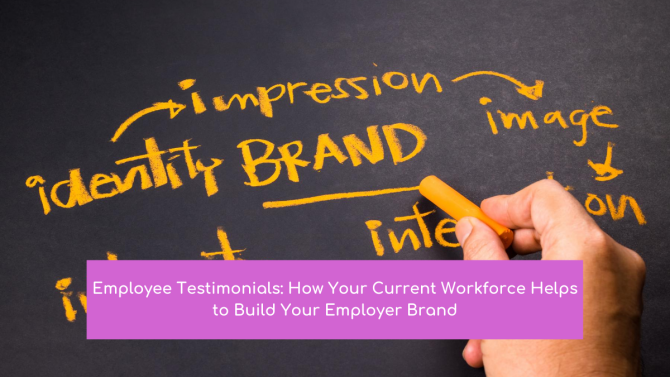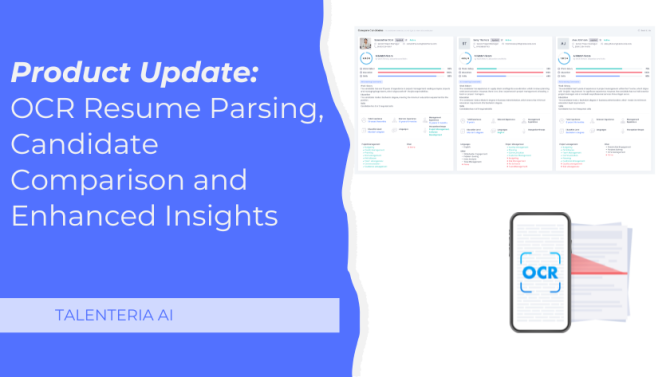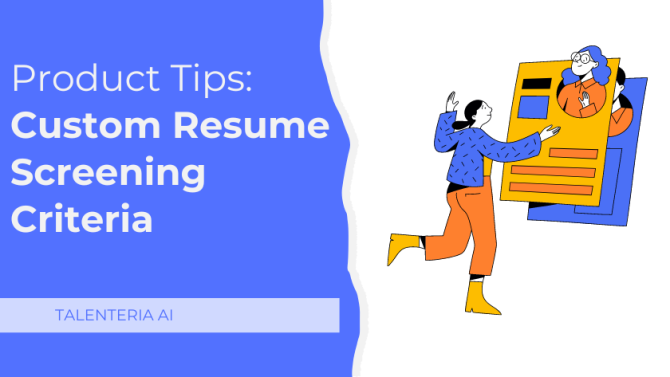
Your employees are one of the best and most trusted sources of information about your company. They can tell more about your corporate brand and work environment than you ever could put into words. Job seekers can trust your employees’ judgment, as it puts into context all the benefits, values, and policies you provide.
This is why, if you want to acquire top talent and create an image of a strong employer brand, you need to include employee testimonials into your employer branding strategy. However, there are multiple ways you can obtain and publicize them. Some employers provide their workers with strict templates to adhere to when writing a testimonial, some even pay them extra to get positive comments. While these technics are valid, they won’t result in genuine testimonials that may persuade aspiring candidates.
So, how can you persuade your employees to be your brand ambassadors, get authentic testimonials, and present them to job applicants interested in them? Here are some helpful tips that might make the process easier for you.
Tips on How to Encourage Employee Testimonials and How to Promote Them
1. Be Open About Using Social Media Platforms at the Workplace
According to research, around 73% of people aged 18-34 have found their current job through social media. And you can bet that at least part of them are not talking about official job postings by companies’ social media accounts, but rather through posts made by those companies’ employees.
Social media is a great place for people to share their day-to-day lives. Obviously, their job is a big part of that. Depriving your employees of that is a short-sighted decision. Of course, in some cases, it can be too distracting (everything is good in moderation), but the benefits you might gain from allowing social media usage outweigh that.
Social media posts are employee testimonials in and of themselves. They depict the workplace your employees are a part of, their activities, their losses, and successes, their stories overall. So, if you want to improve your talent acquisition strategy, having an open policy on social media usage is a step towards it.
2. Inform Your Employees Regularly on Various Developments
This tip is fairly simple and obvious – if you want the testimonials from your employees to look professional, relevant, and useful, the employees themselves have to be informed about everything that’s going on and about the part they play in it.
If the worker is passionate and proud of the job they’re doing and of the company as a whole, they’re more likely to share their positive outlook with the world. Not only will that be reflected in an employee testimonial you might ask for, but they also might share it of their own volition through their personal social media pages or other sources.
You might share the relevant information through a recurrent newsletter, in special meetings, or simply sharing the info through the vertical of command. No matter the way you choose, make sure that both good and bad news are shared equally, as it will establish a trusting connection.
3. Take Advantage of General Outings and Organized Events
Company-organized events are important for building a strong connection between team members, allowing employees from different departments to get to know each other better, and overall improving the mood and lifting the spirits. However, you can also use it to promote your brand.
If you provide your employees with a memorable and unique experience they might never have had otherwise, they are likely to share it in their testimonials. Of course, in no way does it mean that you need to force your workers into dangerous and/or unwanted activities.
Overall, general outings are usually met with positive emotions, and you should find a way to share this positivity with potential applicants. It also shows off the relationships between the staff members and, in some way, demonstrates if there is a cultural fit between them and potential applicants.
4. Focus on Unique Stories That Show Off Your Organizational Culture
In some not very successful cases, employee testimonials are presented almost as faceless unremarkable accounts of the company’s benefits. These endorsements, often full of cliches and generalizations, will likely not reach their goal of persuading candidates and showing off the company’s brand.
What you can do to avoid such bland accounts is to encourage employees to share their unique stories about working in the company. For example, who can understand the candidate experience of a person with a disability or a person of color as an employee with the same experience? They will know what to say to persuade the potential candidate to give your company a chance. A real story out of their mouth will weigh much more than you saying “We support the minorities”. You should also be genuinely interested in what these people have to say, and not just searching for a sob story to reap some benefit out of it.
5. Use Different Forms of Media More
One of the most typical employee testimonial formats is a written text with a photo of the employee above or on the side. While it is a valid way of sharing a story and the experience in the company, it is not the only one. And using other forms of media might feel even more engaging and provide a better connection.
More and more companies are using short video testimonials as to their main way of representation on the job market. It is no wonder – these videos are not too long to exceed the average attention span and they allow the applicant to see the faces and hear the voices of the people they would be working with.
Employee testimonials can work in other forms as well. For example, you can use GIF images to make the text livelier and funnier. Or you can use a simple audio format to record a testimonial as a podcast.
6. Make Use of Social Media Yourself
You can use social media both as a place for employees to post their testimonials, share their experience, and as the source of information for a testimonial page for your website. With an agreement from your worker, you can share the posts concerning their day-to-day professional life, unique experiences, and fun time spent with colleagues.
The first benefit of such use of social media is that this way the testimonial seems more genuine. It is easy to recognize fake social media accounts, and pictures from a professional photoshoot you might use otherwise will look staged and disingenuous.
Secondly, by sourcing the content from social media accounts kept by your employees you can ensure the constant flow of content. This way your testimonials will always feel fresh and up-to-date.
7. Pay Attention to Third-Party Review Sites
There is a reason why various review websites for companies have become so popular in recent years. Complete anonymity ensures that past or present employees can share their experiences in the company without being afraid of being fired or some other form of retaliation.
This freedom of speech results in a high level of trust in these comments. Applicants often consider these reviews before hearing the employer value proposition. So, if you want to attract and appease your possible employees, you should try using these websites to your advantage.
First of all, encourage your employees to leave reviews. Don’t be tyrannical about it, try providing small benefits for each post. Secondly, don’t forget to reply to questions and negative reviews as an official company representative. This will show that you care about your image and you’re ready to correct your mistakes.
8. Match the Topic of the Testimonial and the Page You’re Placing it on
Most companies place their employee testimonials on one specific page for applicants to easily find and get acquainted with. This is a valid strategy, but if you have enough testimonials from the employees from all over your company, you can spice your other thematic pages with these comments.
For example, on the page about the benefits you provide to your ex-military or minority employees you can put a testimonial – a real story on how these benefits can actually help these people. Also, it is helpful to post testimonials on pages dedicated to each team for people to understand what their work consists of.
Another page that would benefit from posting employee testimonials on is the job listings page. As this is the page most often visited by potential applicants, the testimonials will reach the target audience there.
9. If You Have a Blog – Let Your Employees Use It
If one of the sections of your company’s website is a blog (either professional or a career one), you should consider making a series of posts made by your employees. This is a great way for them to share their experience, answer the most common questions applicants might have. Plus, it can be easy to fill these posts with personality by including info on employees’ hobbies, goals, and dreams. Overall, it is a great format for testimonials you should not ignore.
Employee Testimonials That Work
Nike
Nike employee testimonial page is a mix of text and short video-based testimonials. It is called Life @ Nike – and it focuses on the life of their employees at the company, the everyday working process, the way they produce ideas, and what each person contributes.
From this page, it is obvious that at Nike they are proud of their corporate culture, and they are ready to share their experience and how important each person on their team is. They also share how diverse their team is and how it makes them stronger.
Romp n’ Roll
This company combines its video-based employee testimonials with the testimonials from their clients – parents. Not only does it show which employee value proposition is the most valuable for the company, but also shows how the love of kids connects the workers and the parents.
The franchise owner testimonials are another part of this page that assures the job seekers about the atmosphere of the place and how valuable their skills and approach are.
Hand and Stone
While the testimonial page from this company does not include reviews from the clients, the video testimonials are clearly meant for them as well. While they still provide personal stories and experiences from the employees, they also illustrate the work process, which is helpful both for applicants and potential clients.
Nationwide
м
In another video-based employee testimonial page, Nationwide focuses on providing a closer look at the experiences its workers have during their day-to-day life. The video testimonials are titled “A Day in Life:_” and provide a detailed description of the routine each employee is going through. Another part of these videos is a personal story of each employee, what has brought them to the company, and how they cope with the problems and challenges they face.
Conclusion
All in all, getting, framing, and promoting employee testimonials is not an easy task. For them to work, you need them to be genuine, trustworthy, and specific. They need to tell the story; they need to have a face and a clear voice. It is not enough to follow a template and fabricate a positive outlook. If you want your company culture to be represented fairly, you need to let your workers be heard.
However, the benefits you get from getting quality testimonials are countless and are definitely worth the effort. They are the most trustworthy source of information for job applicants and will make it easier for them to make a decision, whether the position is suitable for them and whether they are suitable for the position.
So, don’t have any doubts and ask your employees to represent your company brand. If you do everything right, they will be glad to share their experience and be the brand ambassadors your company deserves. Follow the tips we’ve provided and you’re sure to succeed.





